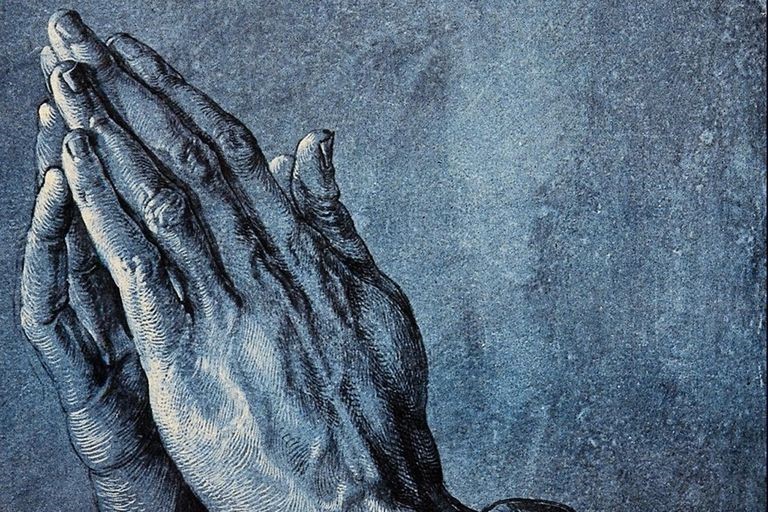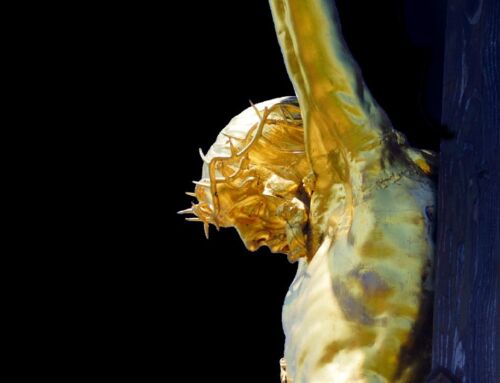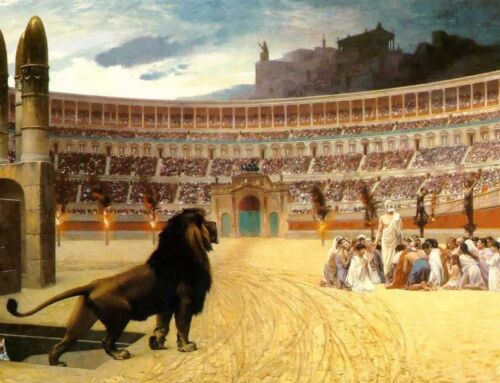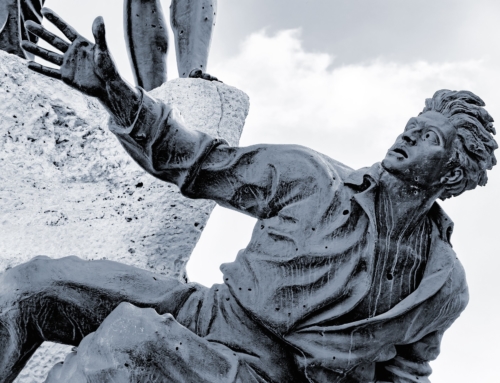It is impossible to know from external appearances what kinds of interior burdens people carry with them throughout life. In fact, if we knew the inside story of most people’s lives, we would gain a deep reverence for them and a respect for their perseverance through the difficulties that only they have experienced and that only they know.
One such example is of the famous German Renaissance artist, Albrecht Dürer (1471-1528) and his younger brother Albert, whose inner burdens were hidden to all but a few during their lifetimes. It is a story of how one person’s suffering can transform another and even have an extraordinary effect on the world.
Albrecht and his brother Albert came from a middle class family of eighteen children. Both boys wanted to be artists, but their parents could not afford to send the pair of them to the academy (art school) as they desired. In fact, it was unlikely that they could even afford to send one of the boys to a school of that type.
One night the two brothers made a pact. They would toss a coin, and the loser of the coin toss would go to work in the coal mines near their home in order to support his brother during his years of study.
Four years after that, they would reverse roles: the brother who went to school would then be able to work and make money and would support the other brother as the latter studied and pursued his dreams of becoming an artist.
As providence would have it, Albrecht won the coin toss and spent four years in the academy learning and applying his trade. He proved to be something of a prodigy at drawing, painting, and woodcutting, even surpassing his teachers in artistic ability.
When four years passed and it came time to send Albrecht’s younger brother to school, poor Albert broke down sobbing. He showed his brother his working hands that had been damaged during the previous four years.
He told Albrecht that every bone in his hands had been broken at least once by the hard labor in the coal mines. His hands were rough, disfigured, and arthritic. It was now impossible for him to do the fine and delicate work of an artist.
It is said that Albrecht was so moved by his brother’s sacrifice that he asked Albert to pose in prayer for him. He then drew the famous ink and pencil sketch of the “Praying Hands” as a model for an altarpiece he had been commissioned to create for a patron.
The simple drawing, which contains in itself the silent story of brotherly love, sacrifice, and generosity, has become a favorite of Christians for generations and is still seen today hanging on the walls of many Christian homes as a reminder of our need to pray.
It is also a reminder that the greatest sacrifices are often the most hidden – and the most pleasing in the eyes of God. Albert’s four years of sacrifice for his older brother had an enormous spiritual effect: he gave the world the gift of one of the greatest artists who ever lived.

Soul Work
It takes a truly selfless spirit to make silent sacrifices for others, especially for those who will never recognize our generous gift or thank us for the personal cost of our sacrifice.
For these instances the Lord has provided a beatitude: “Blessed are the meek; for they shall inherit the earth” (Matthew 5:5). The Lord promises an inheritance to those who selflessly give to others, not immediate wealth!
Choose someone today to receive your gift of time, talent, treasure, or just the gift of your presence. Ask for nothing in return. Seek no thanks or emotional recompense. Give for the sake of giving.
——–
Source: Learn Religions.




I was always intrigued with the drawing of the praying hands but knew nothing of its origin. Thanks for providing the inspiring story of its origin. I will now view it not only as a beautiful drawing but am inspiring story of the incredible value of going out of one’s way to help someone else.
As inspiring as this story is, it has been proven false. The “Praying Hands” was actually a study done by Albrecht Durer for a larger, three panel painting that hung behind the Heller Altar in a church in Frankfurt which was destroyed by fire in 1729.
Thanks Aenne, I’ll do more research on this. I appreciate the feedback. Peace.
I got a cap as a gift during the summer with the praying hands, I fell in love with it as a nice piece of artwork, and created a windscreen sticker for my car. It was just s few days ago someone was telling me the story and so I was doing the research on the it. Such a beautiful story of love, commitment, faithfulness and the importance of prayer. I now value my car decal even more
Wow, that’s wonderful, Judith. It’s an amazing image and few people know that the greatest Renaissance artist painted it. Have a blessed Christmas!
Do you have a citation of it being false? What is your source?
I heard that two monks who was living in very mountain area and were so very poor.so before they died put their hands together and tied it with ropes. Saying that they die Praying together.
I had not heard that story. Pretty amazing in itself. Have a blessed Christmas!
Good testimony, the praying hands. I’ve seen the drawing for years and seen ceramic moldings too.
I too have an artistic talent too. I’ve admired the artwork of the artist that drew it. Prayer changes things and God hears them too.
These boys did not know how far there effort would go but God knew and blessed it.
Dear Judy,
I’m sorry it has taken me so long to respond. The notification went into my spam folder! Thanks for your feedback. too. This is truly an amazing story. Albrecht Durer is perhaps the preeminent German artist of the Renaissance and one of my absolute favorites. Such a different world! God bless you and thanks for checking out Sacred Windows. I post something every week. All the best, PD
Perhaps you haven’t had time to research this topic since you originally posted this in 2021, but I googled it for you and this story about Albrecht Durer has been debunked here, line by line:
https://arthive.com/publications/4284~Art_fake_with_exposure_hands_of_durers_brother_quarries_and_a_poor_family#google_vignette
Please remove this false story from your site.
Leviticus 19:11 – “Do not steal. Do not lie. Do not deceive one another.”
One day when I was in my early 40`s, I asked my poor mother when she started working?
She turned to me and answered – When you were born.
I regret to not have seen the skeletons of truth during my youth, and instead to have delved too deeply into empty religious rites.
My mother gave me more than I ever deserved I just didn`t see it..
Life is fair,
Whether the story of the hands is fake or not, the main lesson I drew from the story was that of sacrifice, and my mother’s hands, who raised eight children, speaks of sacrifice. The hands of Christ speaks volumes; nailed to the cross, He was my sacrifice. I am grateful.